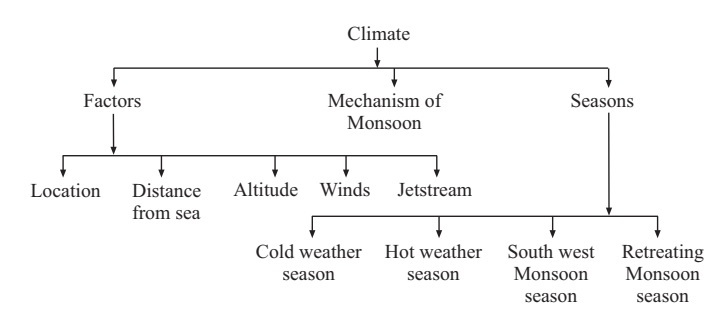Climate of India
GeographyIndia has monsoon type of climate. The word monsoon refers to the seasonal reversal of the wind direction in a year. Due to this, India has four prominent seasons - cold weather season, hot weather season, advancing southwest monsoon season and post or retreating monsoon season.
Monsoons are irregular in nature and are affected by different atmospheric conditions. Because of this, sometimes monsoons are late or sometimes early. Monsoonal rainfall is not equally distributed. It goes on decreasing from east to west in the northern plains and decreases from west to east in the southern part of India. In some parts of the country the floods are causing havoc, whereas in other parts of the country drought makes people unhappy.
There are many factors which affect the climate of India. These are location, distance from the sea, altitude, mountain ranges, direction of surface winds and upper air currents.
Most of the rainfall of India is received by advancing south-west moisture bearing winds. Due to the tapering of mainland into Indian ocean, the south west monsoons are divided into two branches - Arabian Sea branch and Bay of Bengal branch. The amount of rainfall received at a particular place depends upon its location besides other factors. Himalayas also play an important role in blocking these winds from going towards north and compel them to shed their moisture in India.

Mechanism of Monsoon
During summer, the interior parts of North India plains are intensely heated. This high temperature heats up the air and a low pressure is created. This low pressure is also known as monsoonal trough.
On the other hand, temperature over the Indian ocean is relatively low causing high pressure in the region. Due to this difference in air pressure, the winds start blowing from high pressure to low pressure or from sea to land. Their direction is just opposite, i.e. southwest to northeast. Since these winds blow from sea to land, they are moisture laden and cause rainfall.
Al Nino and southern oscillation also affect the monsoons.